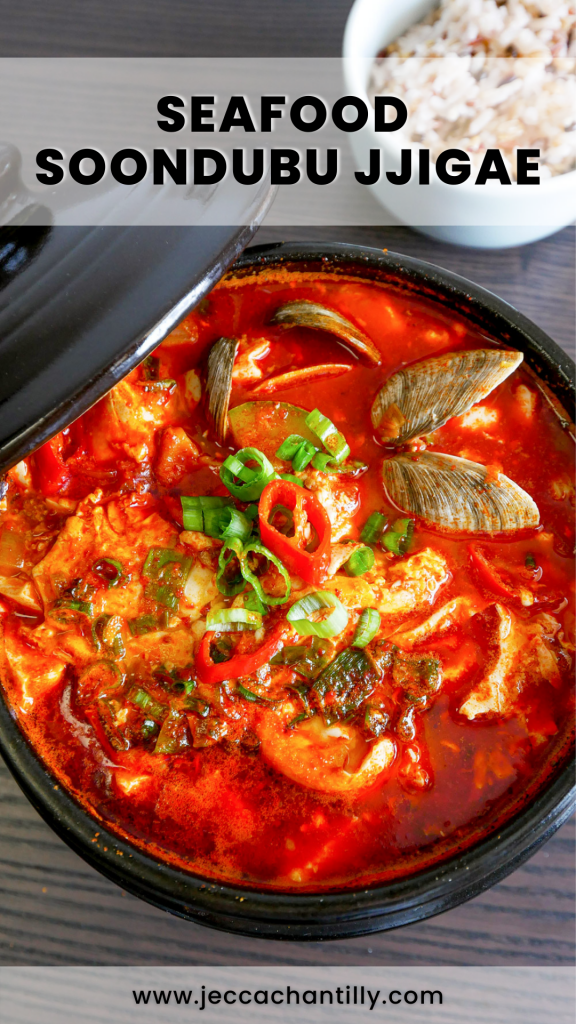This seafood soft tofu stew or ‘haemul soondubu jjigae’ is the epitome of Korean comfort food. It’s a spicy, flavorful, umami-rich bubbling pot of stew served with soft tofu, assorted vegetables, and seafood like clams and squid.
I went clamming the other day and was so excited when I found over 4 dozen clams that were the size of my fist. When I brought them home and cooked them, they turned out rubbery and as tough as shoe leather. Clams can get really rubbery when they’re overcooked, but I took them out of the heat as soon as they opened, so I knew, for a fact, that those weren’t overcooked.
There was absolutely no way they could be eaten whole, so I blended up the large clam meat with some broth and used it in the soup base for sundubu jjigae. Let’s just say it was the most flavorful and delicious sundubu I’ve EVER had!
Every bite was a seafood flavor bomb, so if you’re a seafood lover like me, you have to try this recipe! It’s spicy, hot, refreshing, and clammy!!
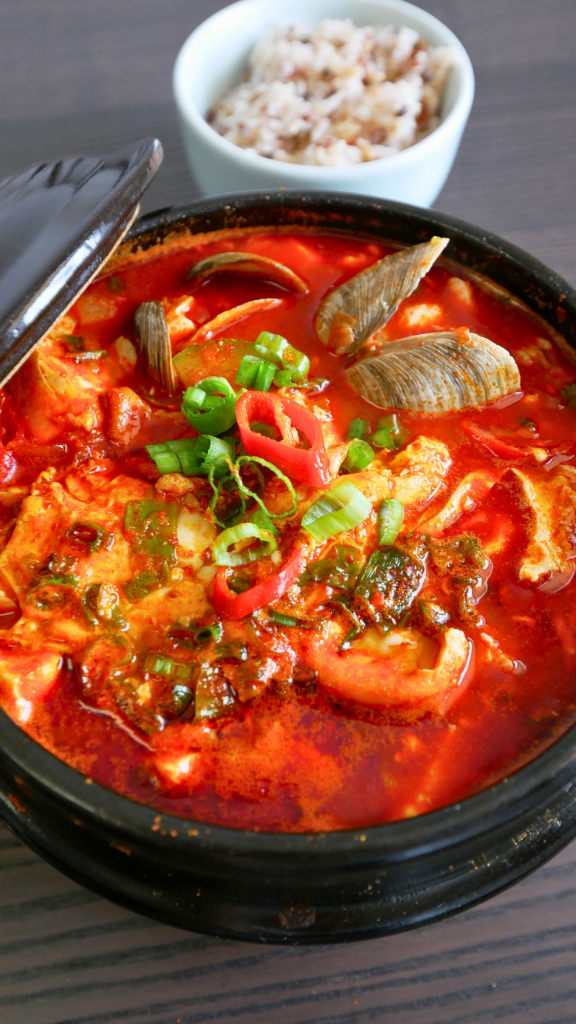
Why you’ll love this recipe
If you’re familiar with Korean cuisine, you know that there are several versions of soondubu jjigae. But if you’re a seafood fiend, you should definitely try this seafood stew recipe at least once in your life!
It’s a spicy and umami broth that’s elevated with blended fresh clam meat, so you get to savor the freshness of its flavors in the stew base and as a stew ingredient. This seafood soondubu jjigae is also easily customizable, so you can swap the seafood and vegetables with anything you like or have available!
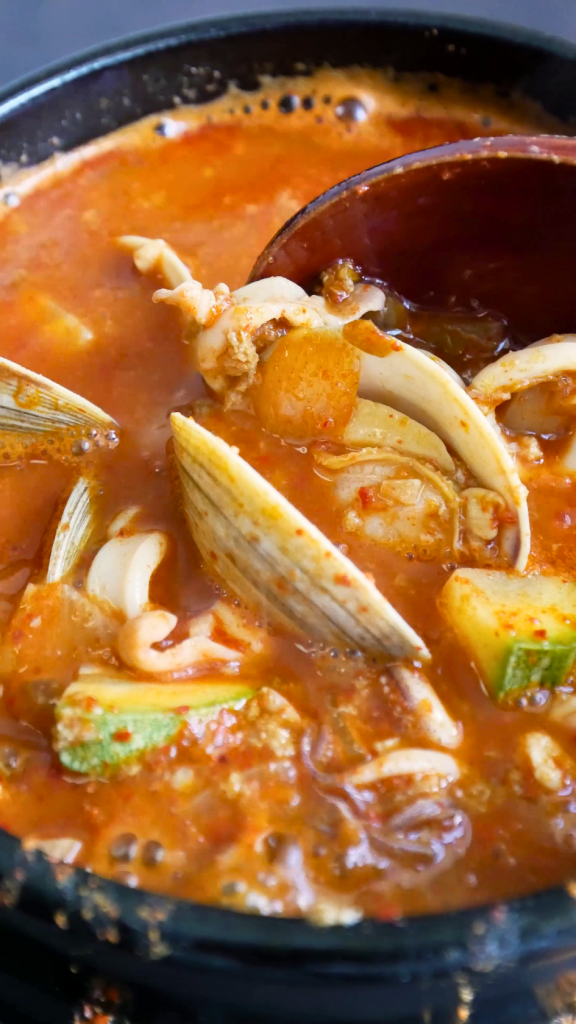
Seafood Soondubu Ingredients & Substitutions
Silken tofu: silken tofu is traditionally used in soondubu. It’s an essential ingredient in this dish because it adds a velvety texture that complements the stew. You can easily find it at your local Asian grocery store. If you can’t find silken tofu, you can substitute it with soft tofu or firm tofu. It won’t be quite the same however, it’ll be just as delicious!
Small clams: small clams are the star of this dish, so make sure to get them live and fresh from your seafood market! I’m using the little neck variety for this recipe, but feel free to use other types.
Squid: squid is one of my favorite seafood which is why I added it to this recipe. Feel free to swap it for your favorite seafood, including shrimp, prawns, scallops, octopus oysters, or mussels.
Zucchini: zucchini is a staple vegetable in this recipe. But you can also substitute it with squash or more onion.
Onion: onion is a powerful aromatic that builds the base flavor of the stew. It’s used in two ways – in this application, it’s diced and added to the stew.
Garlic cloves: garlic cloves also build the flavors of the stew. Feel free to add more garlic if you like!
Scallions: the white part of the scallions are used to make the scallion oil or ‘pa gireum’ which is essential for any soondubu recipe. The green part is used for freshness and color.
Hot chili pepper: adding chili pepper is completely optional, but it turns up the heat if you want to add more spice. Feel free to use your favorite chili pepper, including jalapeno, serrano, or Thai chili peppers.
Gochugaru: gochugaru builds the spiciness of the dish and provides a vibrant red color to the stew.
Fish sauce: you’ll need fish sauce to season the stew, as complements the clams and seafood delicious. Fish sauce can be substituted with soup soy sauce or salt.
Egg: soondubu jjigae is not complete without an egg! Feel free to an add extra egg.
Neutral oil: any neutral-tasting oil will work great for this recipe, including vegetables, avocado, grapeseed, sunflower seed, corn, canola, and more. Keep in mind that olive oil is not a neutral oil because it has a strong olive flavor.
Anchovy Clam Broth Ingredients & Substitutions
Large clams: the large clams will be used to make a paste for the base of the stew. Be sure to pick out the largest clams you can find!
Water: water is used to make the anchovy broth
Dried anchovies: dried anchovies are the main ingredient to build the base flavor of the stew. If you’re in a pinch, you can use anchovy powder instead. Check out my homemade Anchovy Powder recipe. This lasts a very long time and is great to use when you want to make a quick broth. Alternatively, you can double the amount of dried kelp.
Dried kelp: dried kelp also builds the salty and umami flavor of the stew. As a substitute, you can also double the amount of dried anchovies and adjust the fish sauce according to taste.
Onion: this is the second way that the onion is used. It is added to broth to impart flavor and a touch of sweetness. Onion can be substituted with radish or cabbage.
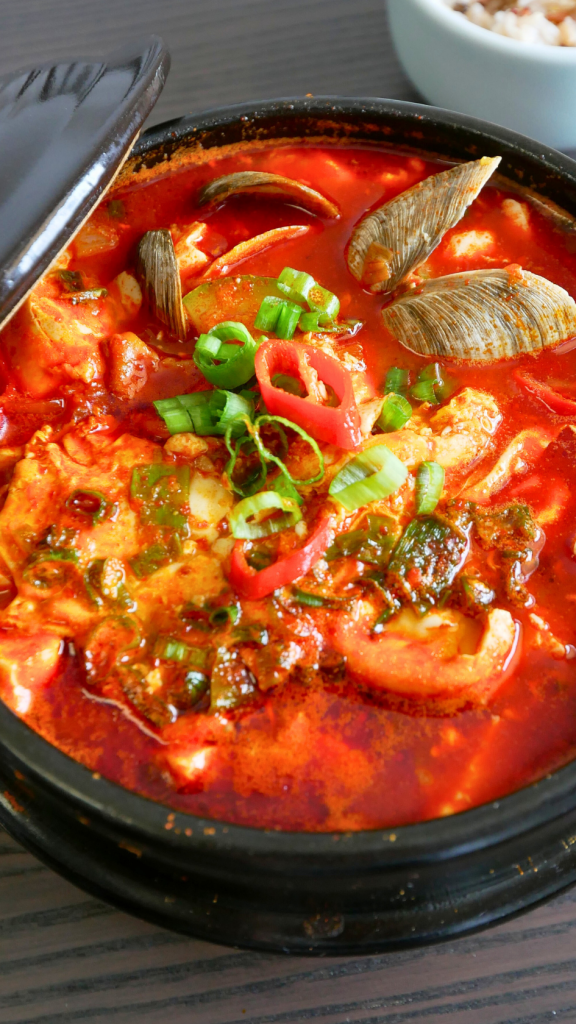
How do I prepare Seafood Soondubu?
Step 1: Prepare the anchovy clam broth


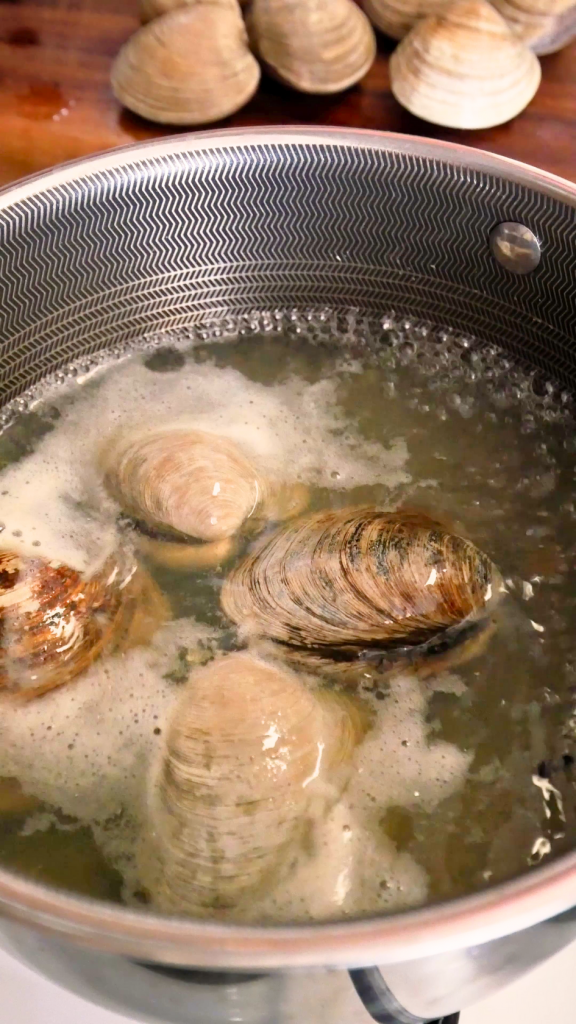
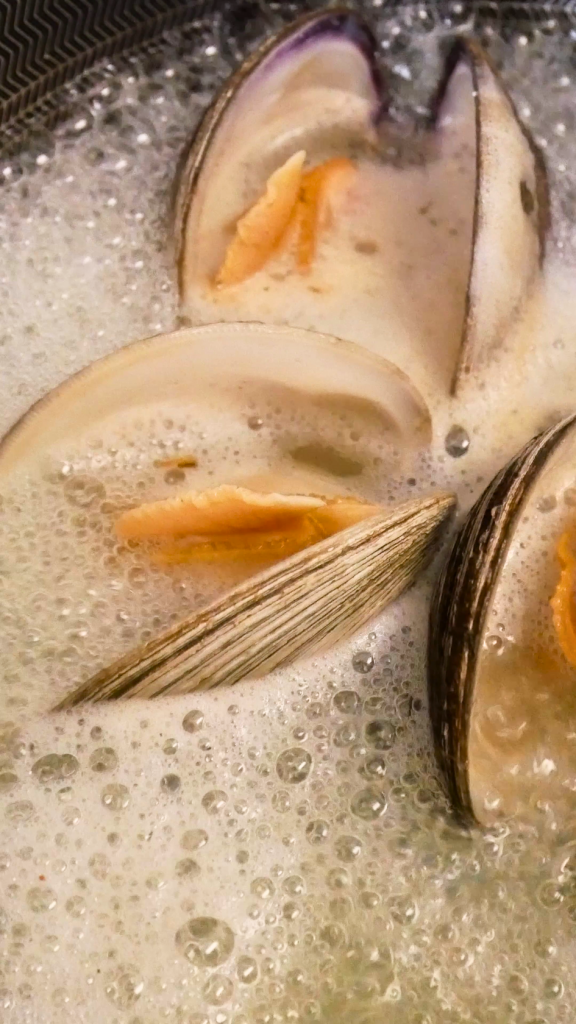
In a pot, bring water to a boil. Add dried anchovies, dried kelp, and onion. Boil for 20 minutes until the broth reduces in half. Next, toss in the large clams and boil until they open up.
Step 2: Blend the clam meat
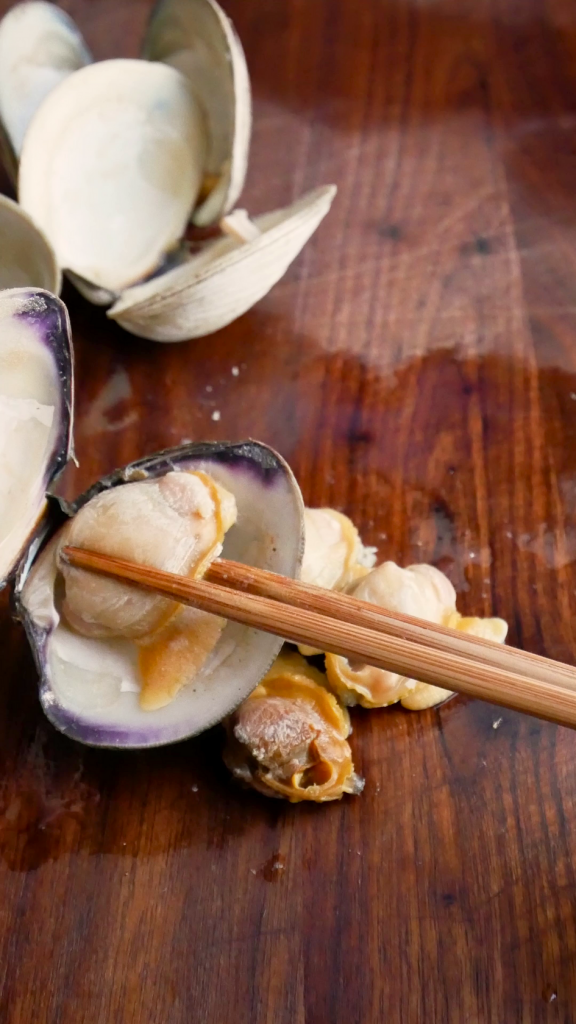
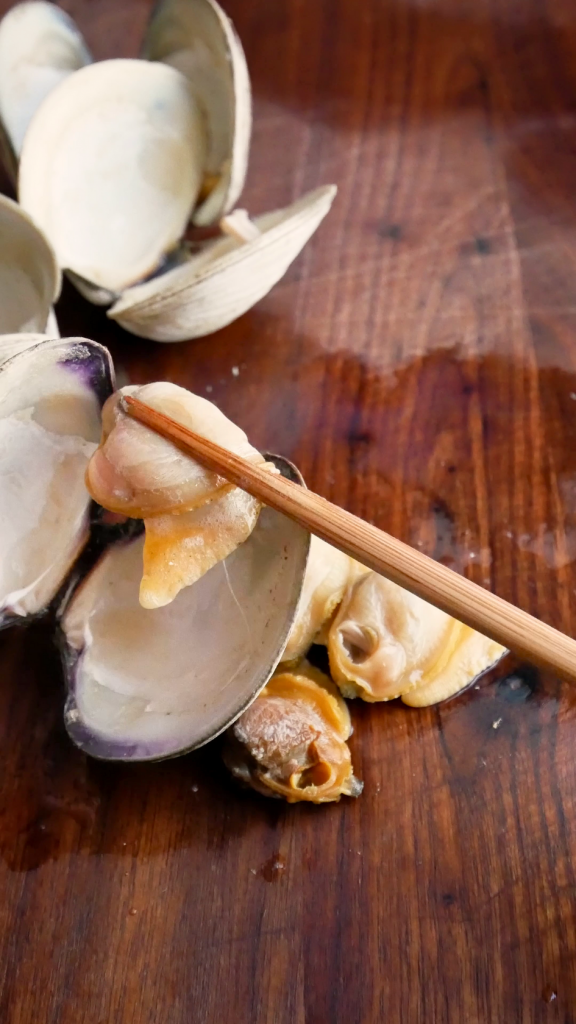
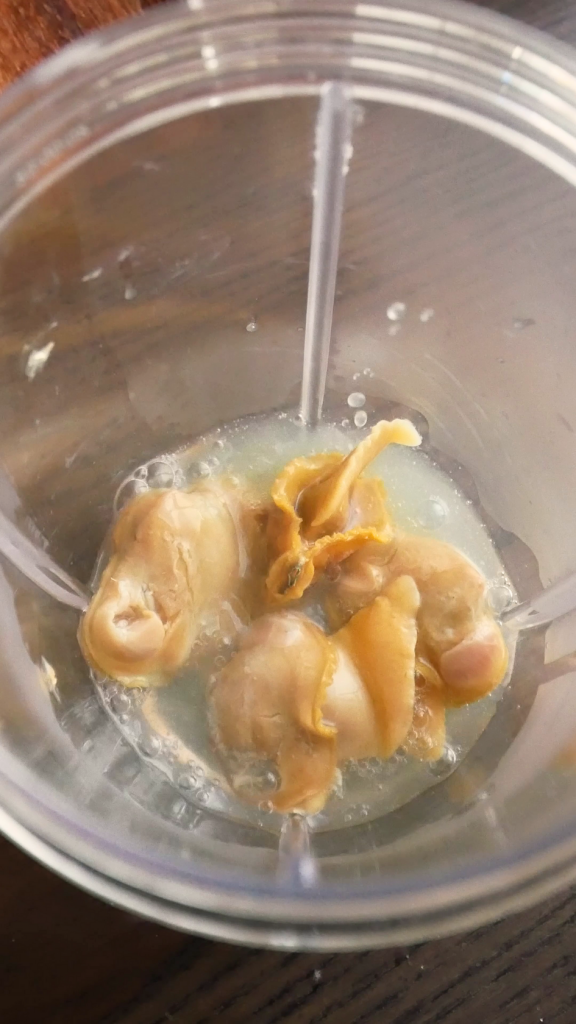
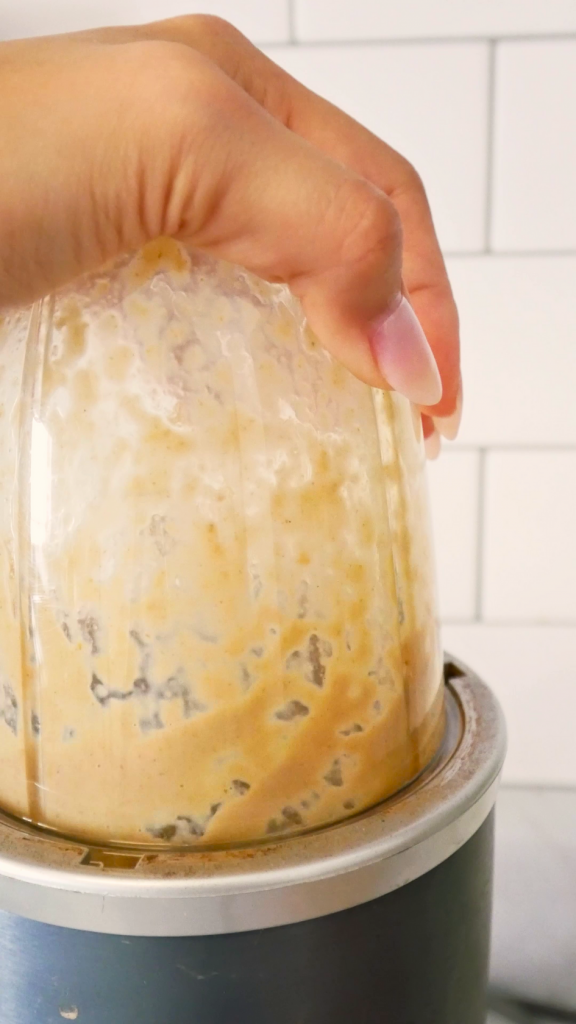
Immediately remove the clams from the broth, and transfer the clam meat into a blender. Add 2 tablespoons of broth into the blender and blend until it forms a wet paste. Set the past aside. Next, strain the anchovy clam broth and set it aside.
Step 3: Saute the scallions & add gochugaru
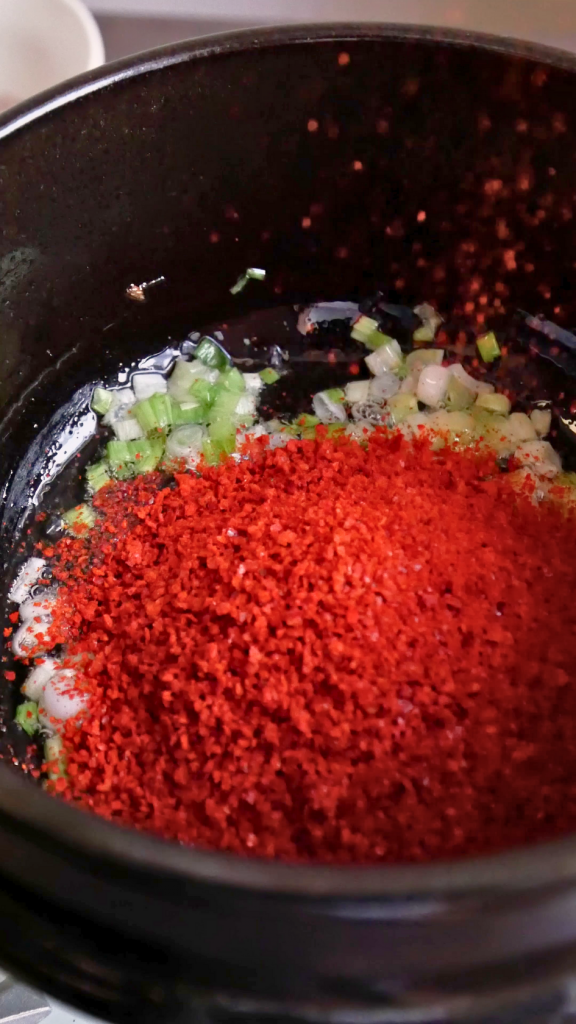
In a heavy-duty pot, like an earthenware pot, heat oil over medium-low heat. Add the white part of the scallions and sauté for 2-3 minutes. Turn the heat to the lowest setting, then add gochugaru. Make sure to consistently stir for 2 to 3 minutes to prevent the chili flakes from burning.
Step 4: Add the clam paste & broth
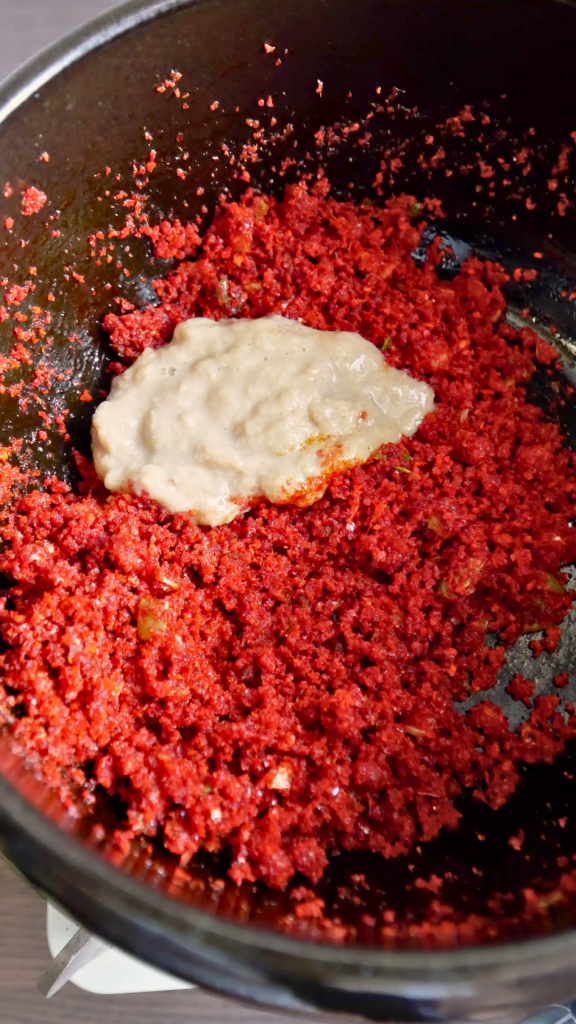

In the same pot, add the blended clam meat and mix it in with the gochugaru. Pour in the anchovy clam broth. Make sure to stir and mix everything well.
Step 5: Add the vegetables
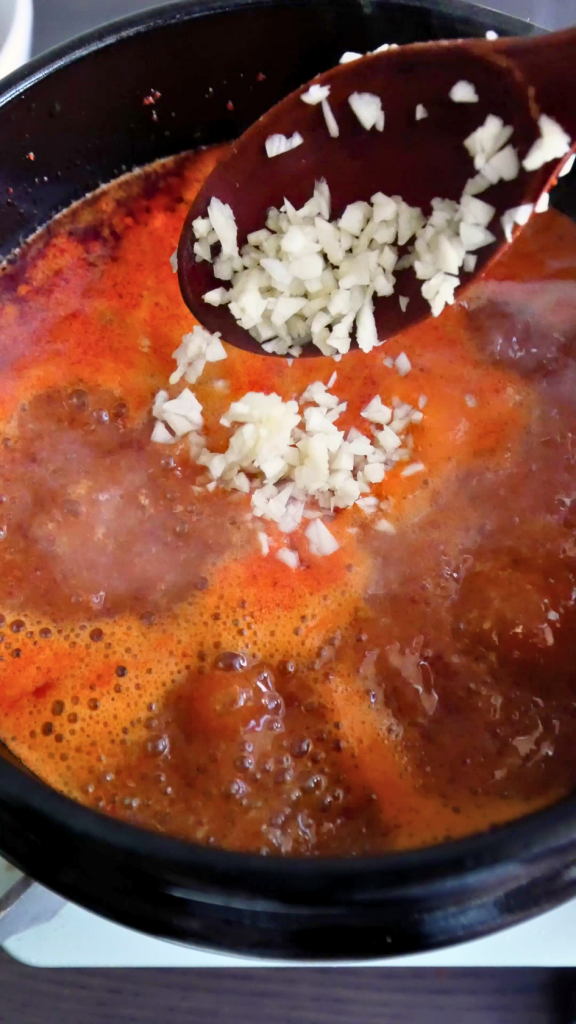
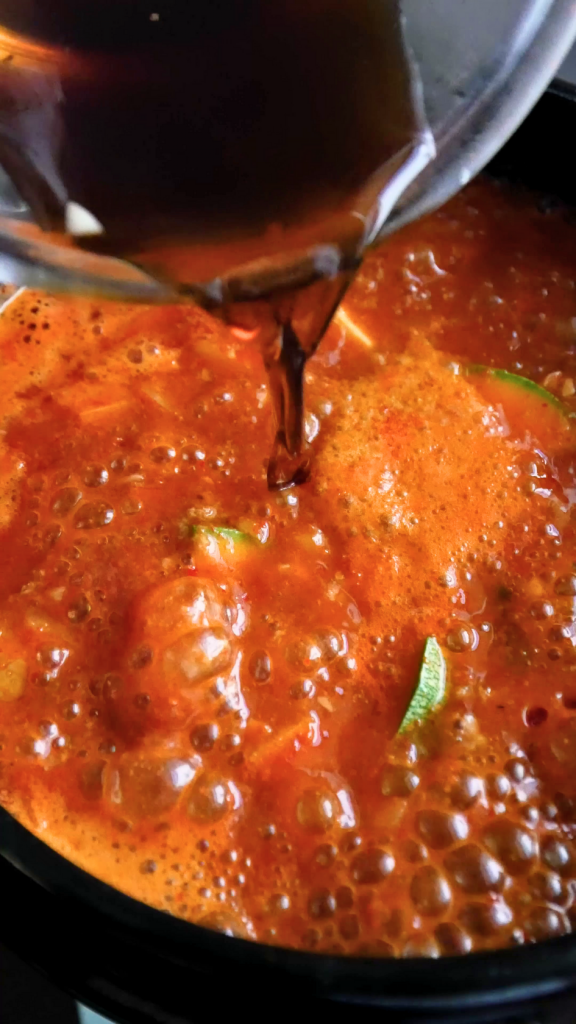
Toss in the zucchini, onions, garlic, and fish sauce. Allow the stew to boil for 2 to 3 minutes.
Step 6: Add the seafood
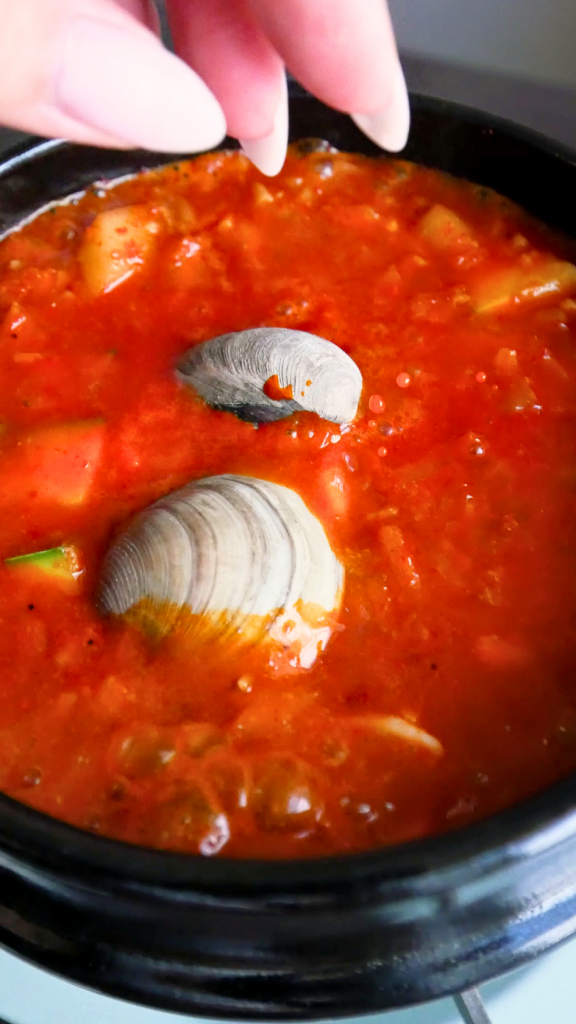
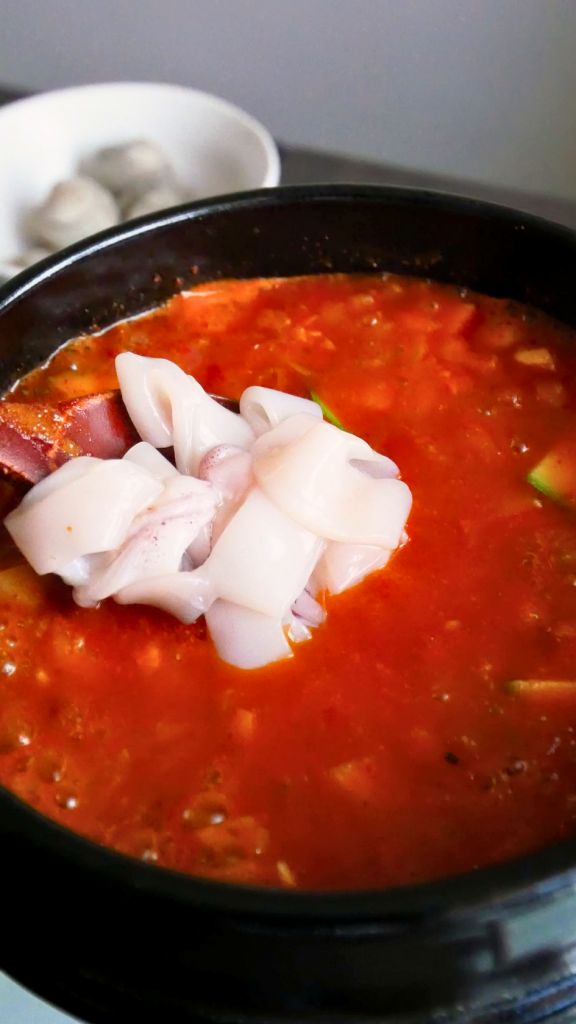
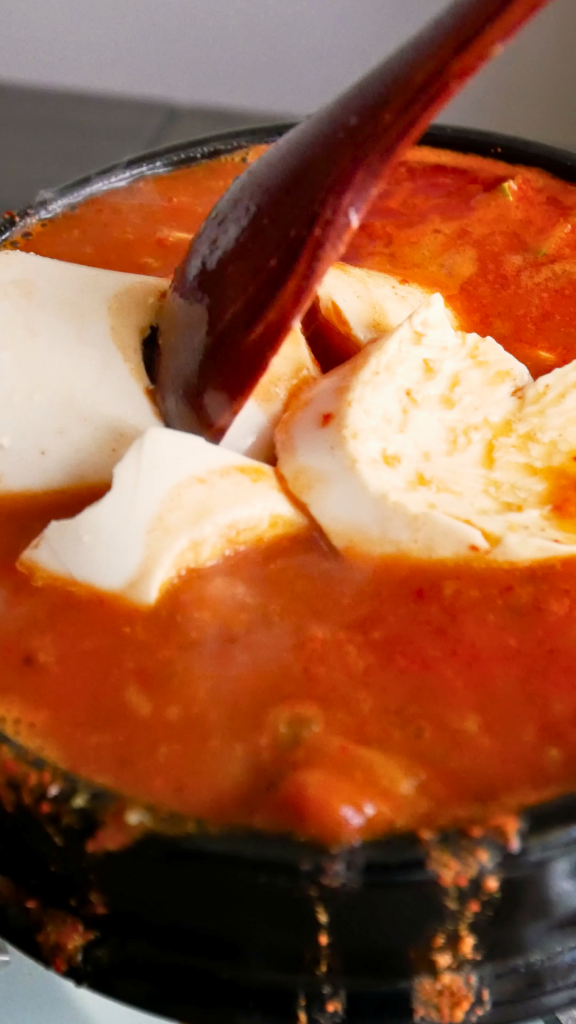
When the veggies are tender, add the squid, small clams, and silken tofu. Gently break the tofu apart with a spoon. Simmer for another 2 to 3 minutes.
Step 7: Garnish and serve
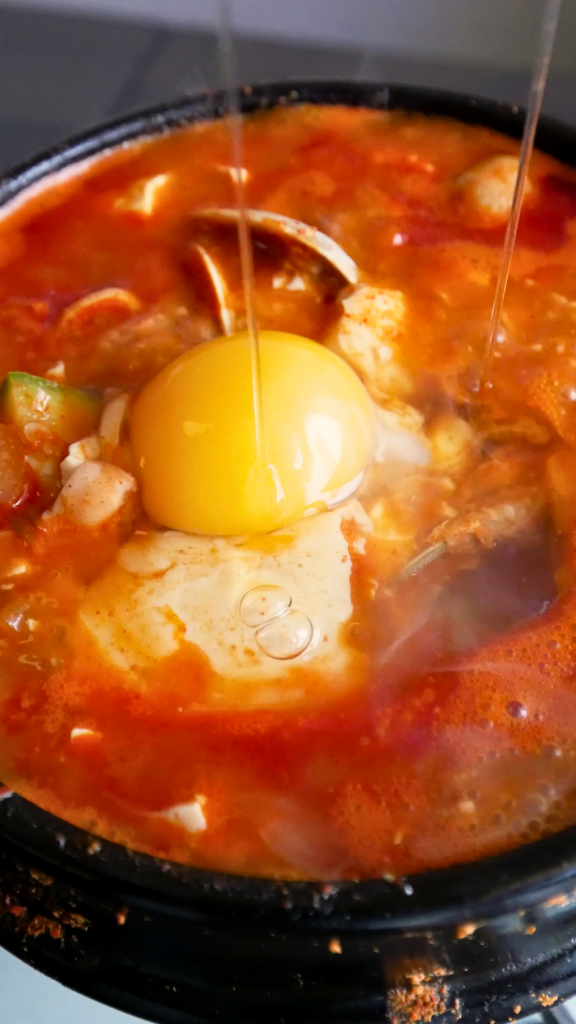

Top the stew with an egg, and garnish with the green part of scallions and peppers. Serve while hot!
Cooking Tips for Seafood Soondubu
Making seafood soondubu jjigae is relatively straightforward, but here are a few tips to keep in mind to make the most delicious stew every time:
- Don’t forget to remove the innards of the dried anchovies! The innards are naturally bitter so you don’t want to end up with a bitter stew!
- The seafood can be customized based on your preferences. For example, you can also use octopus, scallops, shrimp, and mussels.
- You’ll know when the clams are cooked once their shells open up. Ones that stay closed after cooking aren’t safe to eat, so you can toss them.
- Feel free to adjust the amount of gochugaru and hot pepper according to your spice level tolerance.
Frequently Asked Questions
Do I need to use an earthenware pot?
You definitely don’t need to use an earthenware pot (ttukbaegi) for cooking soondubu jjigae. Any deep pot you have at home should do just fine for this recipe.
In Korean cuisine, an earthenware pot is typically used for making soups and stews since it retains heat well and allows slow cooking. In addition, the stew is served directly in the ttukbaegi, so clean-up is also minimal!
How do you remove the innards of dried anchovies?
To remove the innards, start by opening the underbelly of the anchovy. The innards start right below the head and into the body. You’ll want to remove the black parts (innards) by ripping them off. Don’t discard the head! They contain a significant amount of flavor and would be wasteful to toss them out.
Can you store Seafood Soondubu in the fridge?
Yes, you can store any leftover seafood soft tofu stew in an airtight container in the fridge. It will stay fresh for 2 to 3 days. To reheat the stew, place it in a pot over the stove or microwave for 1 to 2 minutes or until it’s completely hot.
Looking for more easy & delicious stew recipes?
For more filling and cozy stews, check out these recipes below:
1. Kimchi Soondubu Jjigae – if you can’t get enough of soondubu jjigae, here’s my take on the kimchi version. It has all the elements you want from the classic stew, but this one is made with extra sour and tangy kimchi.
2. Korean Spicy Fish Stew (Maeun Tang) – if you haven’t tried using fish heads and bones in a stew, you should definitely give this recipe a try. The head and bones make the stew more flavorful, and you won’t have to waste any part of a perfectly good fish!
3. Soybean Paste Stew (Doenjang Jjigae) – this recipe is one of my favorite comfort foods because it always reminds me of home. It’s hearty and filling and only requires 20 minutes to make!
4. Kimchi Jjigae (Kimchi Stew) – if you’re in the mood for a heartier dish, this recipe won’t dissapoint. This warm, spicy, and savory iconic stew mainly features fatty pork meat and kimchi – perfect with a bowl of rice.
5. Korean Potato Stew (Gamja Jjageuli) – if you’re a potato fiend like me, don’t sleep on this recipe. It’s a simple one-pot meal but filled with delectable potatoes and Spam!
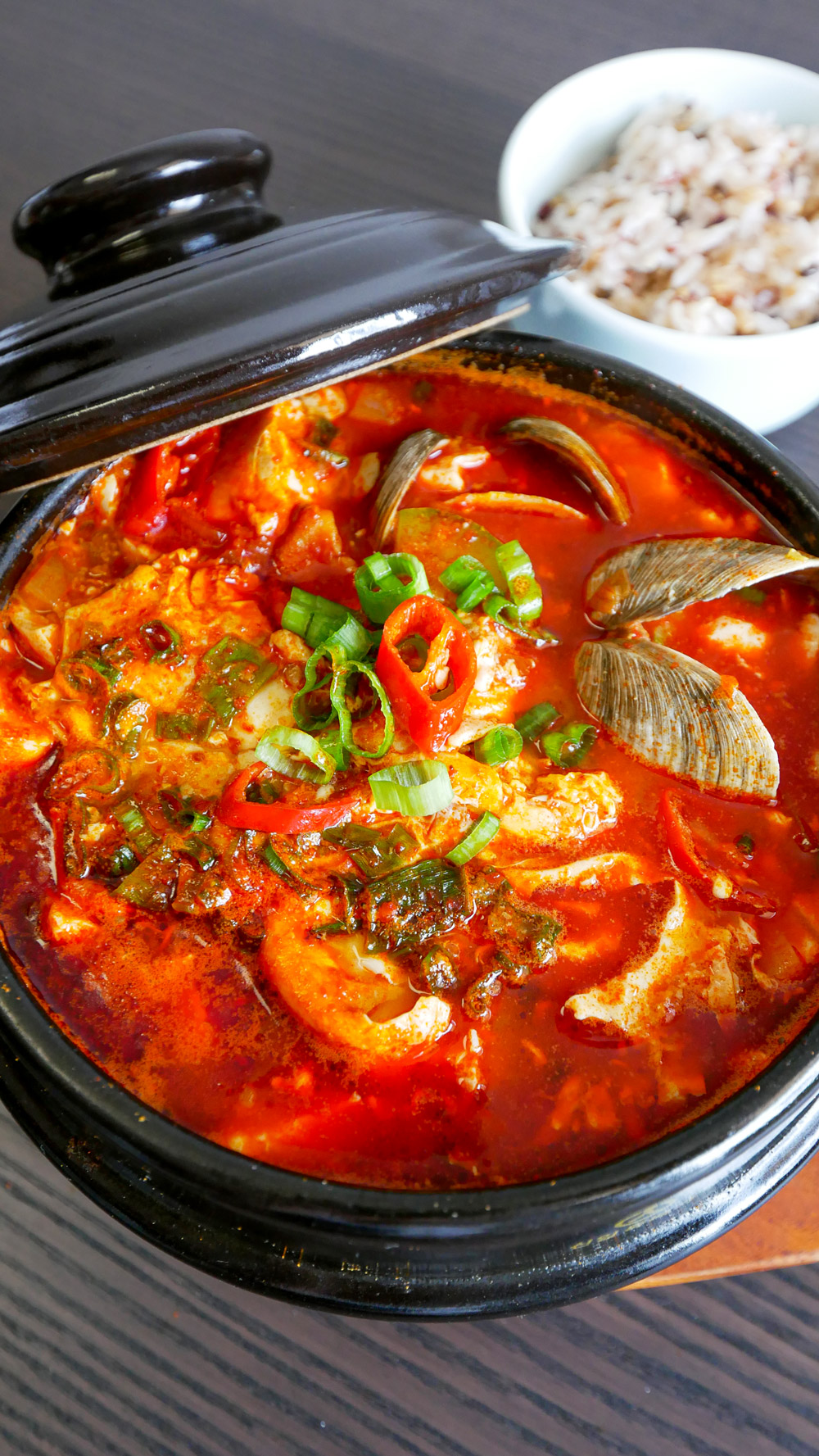
Seafood Soondubu Jjigae Recipe – 해물순두부찌개 (Haemul Sundubu Jjigae)
Ingredients
- 8 oz silken tofu
- 4-6 small clams little neck clams
- 1/4 cup squid cut into bite-sized pieces, substitute with your favorite seafood
- 1/4 cup zucchini chopped
- 1/4 cup onion chopped
- 3 garlic cloves minced
- 2 scallions chopped, whites and greens separated
- 1 hot chili pepper sliced, optional
- 1/4 cup gochugaru Korean red chili flakes
- 1 1/2 tbsp fish sauce adjust to taste
- 1 egg
- 2 tbsp neutral oil
Anchovy Clam Broth
- 4-6 large clams little neck clams
- 4 1/2 cups water
- 8 dried anchovies innards removed
- 1 oz dried kelp or kombu
- 1/4 medium sized onion
Instructions
- Begin by preparing the anchovy clam broth. In a pot, bring water to a boil. Add dried anchovies, dried kelp, and onion. Boil for 20 minutes until the broth has reduced by half. Toss in the large clams and boil until they've opened up.
- Remove the clams and transfer the clam meat into a blender with 2 tablespoons of broth. Blend until it forms a wet paste.
- Strain the broth and set aside.
- In a heavy-duty pot, like an earthenware pot, heat oil over medium-low heat. Add the white part of scallions and sauté for 2 to 3 minutes.
- Turn the heat to the lowest setting, then add gochugaru and make sure to consistently stir for 2 to 3 minutes to prevent the chili flakes from burning.
- Add the blended clam meat and mix it into the gochugaru. Pour in the anchovy clam broth. Stir and mix everything together well.
- Toss in the zucchini, onions, garlic, and fish sauce. Let this boil for 2 to 3 minutes.
- When the veggies are tender, add squid, small clams, and silken tofu. Gently break the tofu apart with a spoon. Boil for another 2 to 3 minutes.
- Top with an egg and garnish with the green part of scallions and peppers!
Video
Pin & save this recipe for later!
